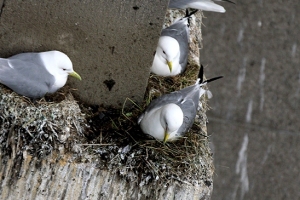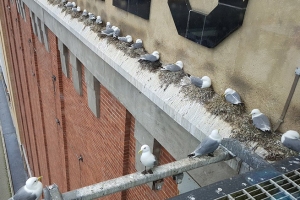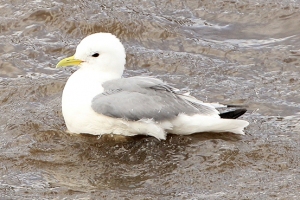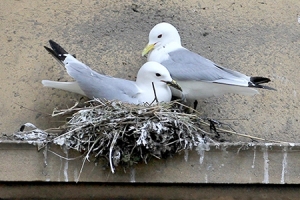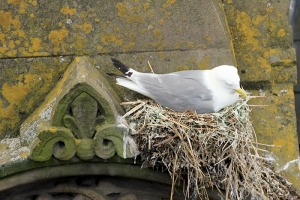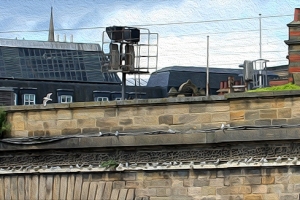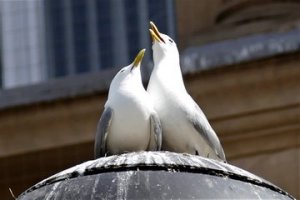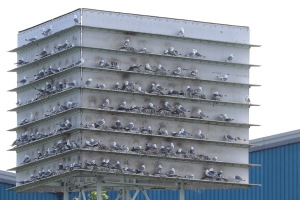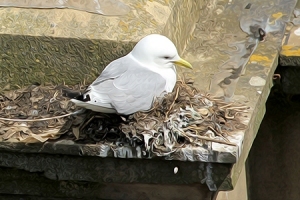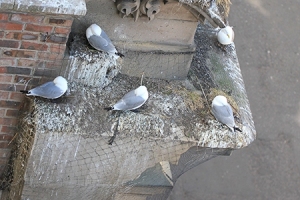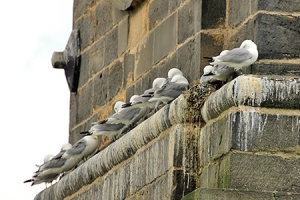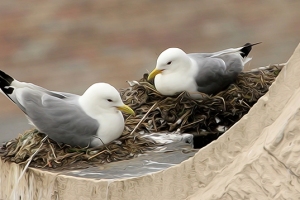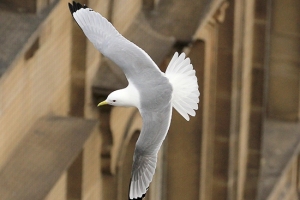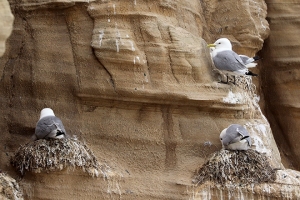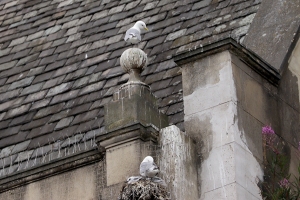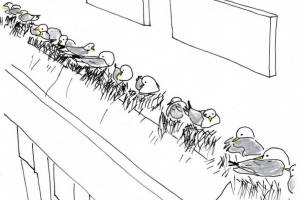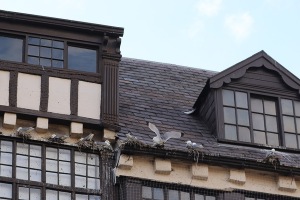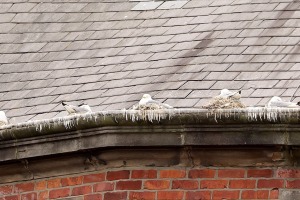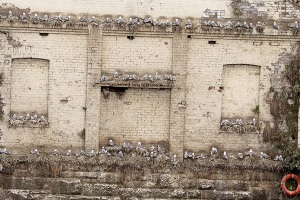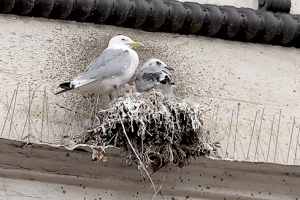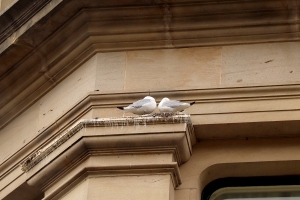Tyne Kittiwake Photo Galleries
“Kittee-wa-aaake, Kittee-wa-aaake”
Here you can view a wide selection of galleries, which showcase a variety of locations, where the Tyne Kittiwakes have chosen themselves to build their nests, to help bring life to the next generation.
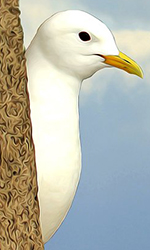
Any photos or pieces of art have been provided for free to help Kittiwakes upon the Tyne to
» Raise Awareness for the breeding colonies that return every year to build their nests. All photos and any pieces of art remain copyrighted to the original contributors.
Should you wish to submit any content towards the Tyne Kittiwake Galleries or elsewhere on this website, please » Contact Us. Quotes are also very much appreciated. Please help us to raise awareness for the Furthest Inland Breeding Colonies of Kittiwakes in the World.
Kittiwake Galleries from the River Tyne Colonies
Please click on an a gallery below to view the photos
One of the bridges that links the City of Newcastle upon Tyne and the town of Gateshead. Over 1,100 pairs of Kittiwakes nest on this iconic bridge. They can be seen nesting high up on the Bridges towers, and the green metal girders in between.
34 Photos
A favourite for the Tyne Kittiwakes every year. Here they are well looked after under the care of the Baltic Centre for Contemporary Art. There is a viewing platform high up on the upper reaches of the building and Durham Wildlife Trust have also installed a Web cam where everyone can enjoy watching live feed from the comfort of their own home.
16 Photos
Whilst the Kittiwakes are with us, groups can often been seen resting on the surface of the River. It is a busy life nesting on the quaysides of Newcastle and Gateshead for a seagull. Kittiwakes fly to the North East Coast to feed. Some Kittiwakes travel as far as the Farne Islands, which is many miles away.
8 Photos
A historic building, owned by Newcastle City Council which sits close to the riverside adjacent to the quayside and the main road. Over thirty one pairs nest on the Guildhall. Most of the Kittiwakes present can be found on the clocktower.
19 Photos
More than Two dozen pairs nest on Phoenix House. High up on the upper ledges of this vintage building, Kittiwakes can be found nesting on elegant arches and amongst the historic scenery.
16 Photos
Kittiwakes love to build their nests high up on narrow ledges. Some pairs have chosen a railway bridge to settle down during the spring/summer months. This can be found as you travel away from the quayside; deeper into the city.
4 Photos
In recent years some pairs of Kittiwakes have adopted some of the street lighting to nest on. These are more vulnerable to predators, however chicks have successfully fledged in recent years.
10 Photos
Built as an alternative, when the old Baltic Mill was converted in today's 'Baltic Centre for Contemporary Art'; the Saltmeadows Tower continues to cater for over a hundred pairs. The tower sits on the banks of the river on the Gateshead side of the river.
13 Photos
In recent years the Kittiwakes themselves have chosen to spend time on the exchange buildings. When they return from their long winter far out at sea, they rest on the upper areas of this building. Between long flights along the river to the North Sea to feed, and as the next generation of Kittiwakes fledge, this building is fast becoming a favourite for them to rest on. One year, a pair nested on an upper ledge and fledged one young Kittiwake.
7 Photos
Up to a dozen pairs of Kittiwakes currently settle down on Lombard House. Here they build their nests close together often facing in different directions. These can easily be seen from the Tyne Bridge; but please be careful not to disturb them, as their eggs start hatch.
4 Photos
As the local breeding population of Kittiwakes expands or as existing pairs are displaced from some of their favourite buildings/structures due to the installation of new anti-bird deterrents; Kittiwakes choose new places to nest. The Gateshead Heritage Centre on the Gateshead side of the river has been chosen by the Kittiwakes since 2019. God bless them!
4 Photos
Kittiwakes can at times choose new buildings/structures to build their nests, to help bring life to the next generation of Kittiwakes. Some choose buildings, close to the roundabout before the Swing Bridge, whilst others explore buildings further into the city towards the railway bridge.
19 Photos
Kittiwakes are great flyers. One of the best places to watch them is from high up on the Tyne Bridge. Here not only can you listen to their addictive “kittee-wa-aaake, kittee-wa-aaake” calls, but you can also watch the 'flight dance of the Kittiwakes'.
17 Photos
As the River Tyne meets the North Sea between the coastal towns of North and South Shields, two enormous piers, mark the way. On the North Tyneside part of the mouth of the tyne, you can find a small coastal shore, surrounded by steep cliffs. This is popular with coastal waders, Cormorants and Eiders all year round.
9 Photos
Some years the local population of Kittiwakes opt to build their nests on the Shilling. Here there are anti-bird spikes and netting present.
2 Photos
One of the most attractive Tyne Kittiwake colonies on Newcastle Quayside. Best viewed from the roadside, especially during quieter off-peak times when passing traffic is less busy. Here you can view newly hatched chicks as the season develops, easily at a distance without disturbing the birds.
3 Photos
The story of the Tyne Kittiwakes all began in the town of North Shields. Over the past few decades, any buildings, the Kittiwakes have chosen themselves to nest on, have eventually been demolished. In recent times, a colony has been present on the Ferry Mews building, adjacent to the Ferry Landing.
8 Photos
Over TWO-hundred and fifty pairs of Kittiwakes nest on Akzo Nobel International Paints. in Felling. This is the third largest colony of Kittiwakes along the river Tyne which can be easily viewed from Walker Riverside Park in Newcastle.
4 Photos
Tyne Kittiwakes in recent years have nested on top of the anti-bird spikes which are present and have successfully fledged young chicks.
1 Photos





















